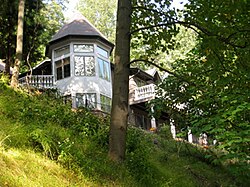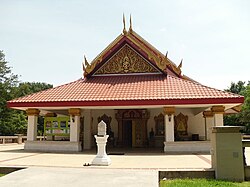

This is a list of Buddhist temples, monasteries, stupas, and pagodas in the United States sorted by location.
Contents
- Arizona
- California
- Colorado
- Connecticut
- Florida
- Georgia
- Hawaii
- Illinois
- Kentucky
- Louisiana
- Maryland
- Massachusetts
- Michigan
- Minnesota
- Mississippi
- Montana
- Nevada
- New Jersey
- New Mexico
- New York
- North Carolina
- Ohio
- Oregon
- Pennsylvania
- Rhode Island
- Texas
- Utah
- Virginia
- Washington
- Wisconsin
- See also
- Notes
- Sources
- External links










